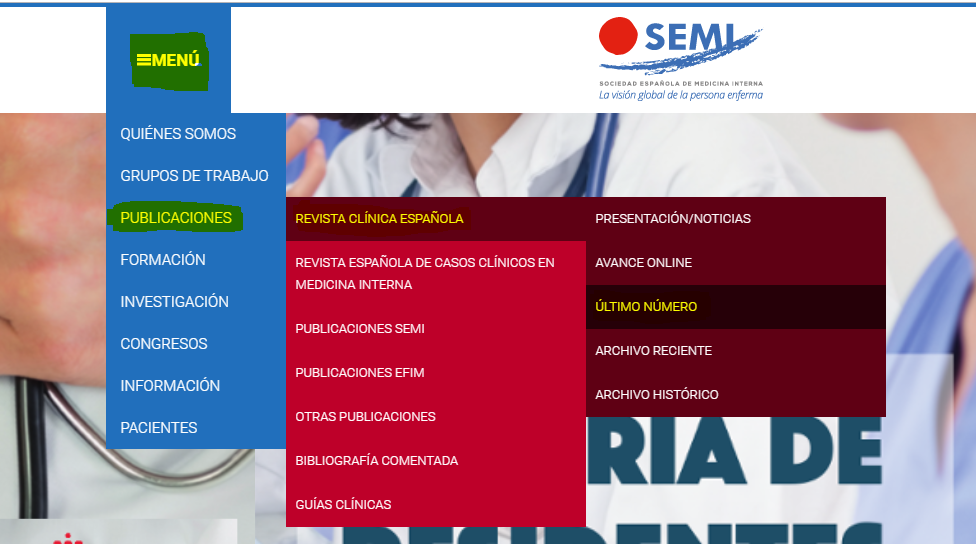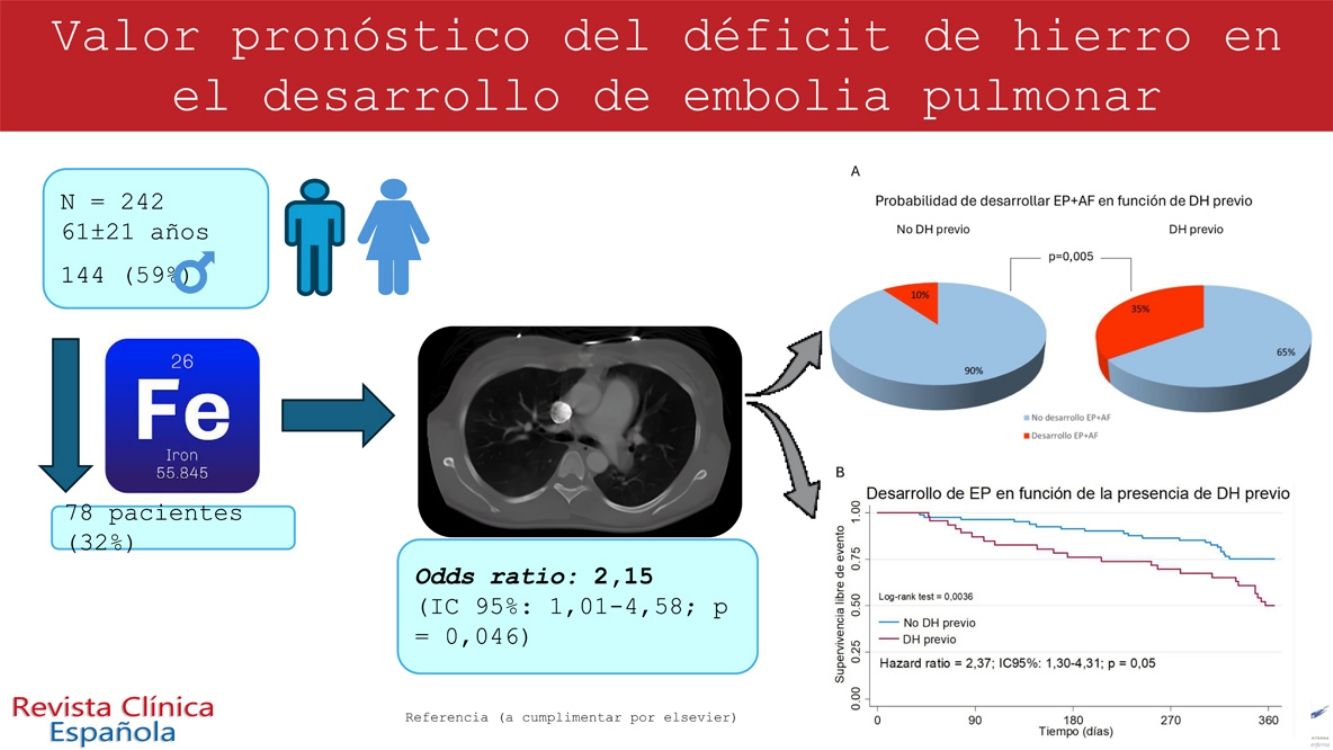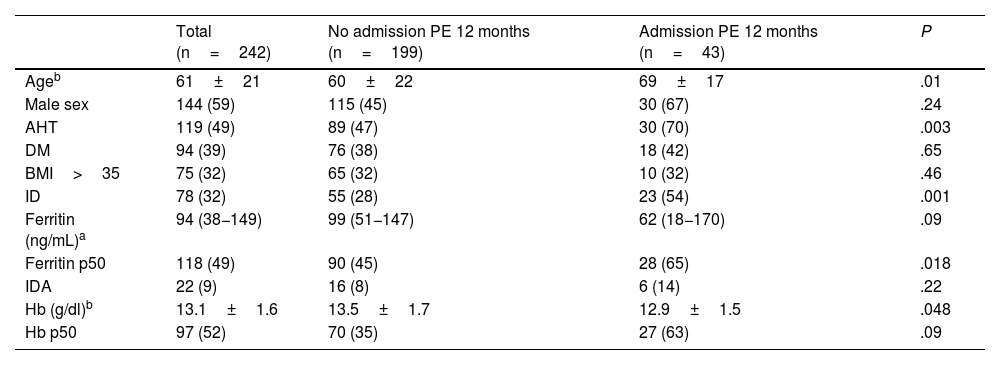Iron deficiency (ID) has not been associated with pulmonary embolism (PE). The aim was to assess whether ID is associated with an increased likelihood of developing PE within the subsequent 12 months.
Patients and methodsRetrospective observational study. Patients with PE during follow-up were selected as cases, and those without the event as controls. Patients with chronic diseases, cancer, fractures, or recent hospital admissions were excluded.
ResultsA total of 43 cases and 199 controls were enrolled. The mean age was 61±21 years. ID increased the risk of PE at 12 months with an odds ratio of 2.15 (95% confidence interval (CI95%): 1.01–4.58; P=.046). Survival analysis showed more than a two-fold increase in the risk of developing PE in the presence of prior ID (hazard ratio: 2.37 (CI95%: 1.30–4.31; P=.05)).
ConclusionID may represent an increased risk of PE in the 12 months following its detection.
El déficit de hierro (DH) no se ha relacionado con la embolia pulmonar (EP). El objetivo fue evaluar si el DH se asocia con mayor probabilidad de sufrir una EP en los 12 meses posteriores.
Pacientes y métodosEstudio observacional retrospectivo. Se seleccionaron como casos a pacientes con una EP en el seguimiento y como controles aquellos sin desarrollar el evento. Se excluyeron pacientes con patologías crónicas, cáncer, fracturas o ingresos recientes.
ResultadosSe registraron 43 casos y 199 controles. La edad media fue 61±21. El DH incrementó el riesgo de EP a 12 meses con una odds ratio de 2,15 (intervalo de confianza al 95% (IC95%): 1,01–4,58; P=,046). El análisis de supervivencia mostró un incremento superior a 2 veces de desarrollar la EP en presencia de DH previo (hazard ratio: 2,37 (IC95%: 1,30–4,31; P=,05)).
ConclusiónEl DH puede suponer un incremento del riesgo de EP en los 12 meses posteriores a su detección.
Article
Diríjase desde aquí a la web de la >>>FESEMI<<< e inicie sesión mediante el formulario que se encuentra en la barra superior, pulsando sobre el candado.

Una vez autentificado, en la misma web de FESEMI, en el menú superior, elija la opción deseada.

>>>FESEMI<<<









